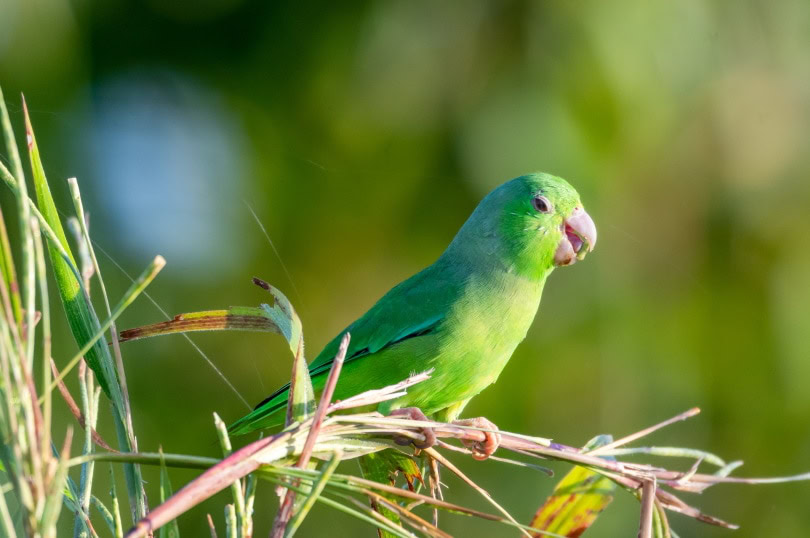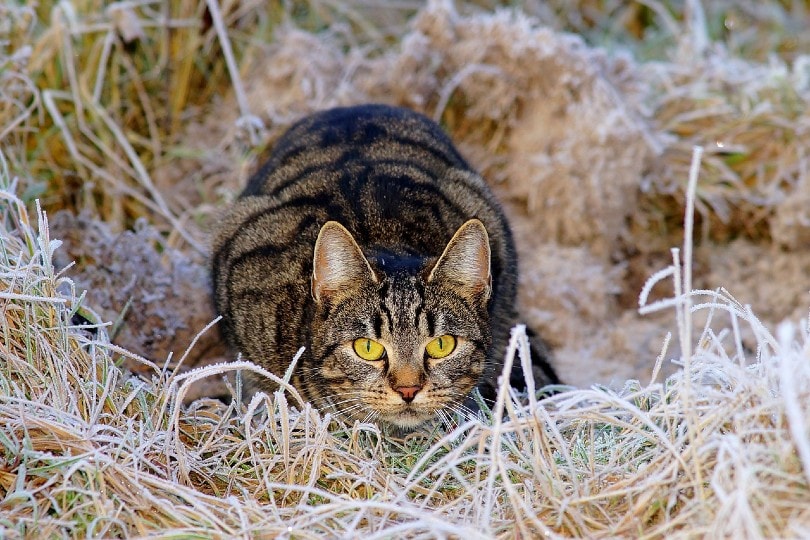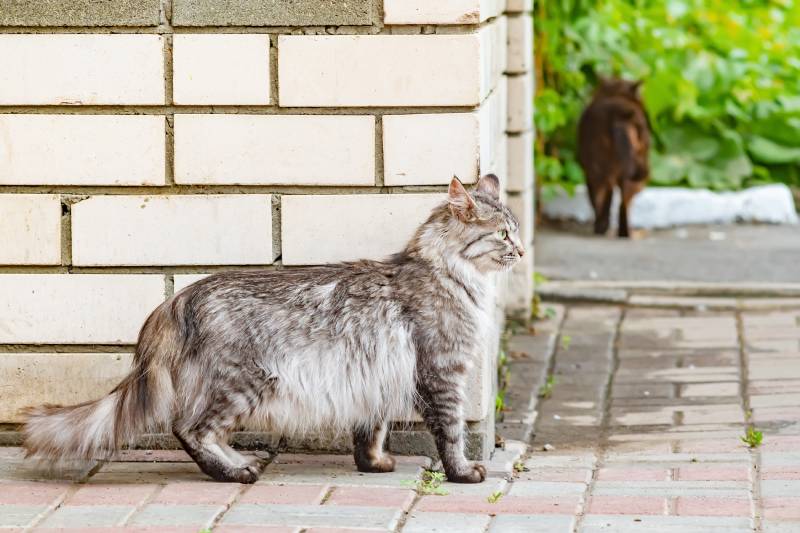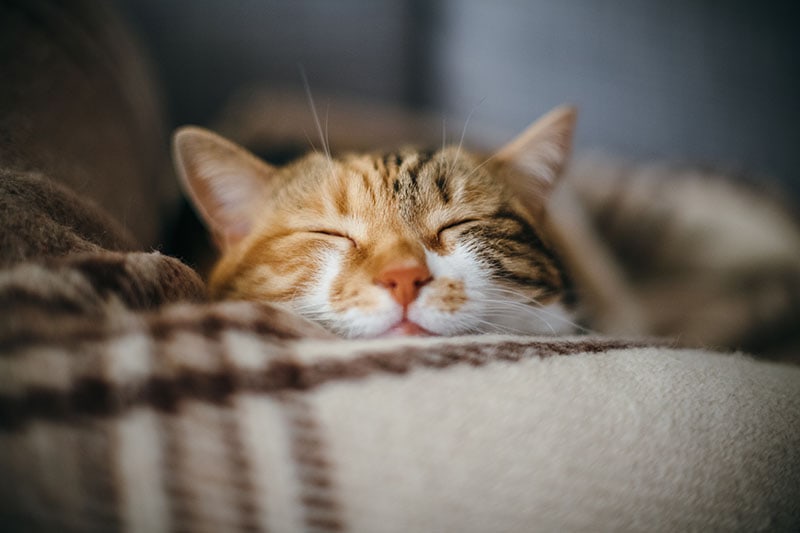Click to Skip Ahead
The parrotlet is the tiniest member of the parrot family. Adults typically don’t grow larger than 5 inches. Although they are small, parrotlets have dynamic personalities. They are popular pets due to their cute appearance and affectionate nature.
Another reason the parrotlet is a popular pet bird choice, especially among apartment dwellers, is that they are quite quiet. While they do make sounds, the noise level is nothing like that of some other parrot species.
Keep reading to learn about the parrotlet’s speech ability, sounds, and the meaning behind the sounds they make.
Bird Communication
In the wild, birds use sounds for many different reasons. The sounds they make all have meaning and communicate a message to other birds in the area.
- Alarm: The alarm calls are used to warn other birds of approaching danger.
- Contact: These calls are used when birds are flying together and need to communicate with other members of the group.
- Flight: The flight call is similar to the contact call. It’s also generally used to communicate about locations to the others in the group.
- Begging: This is the sound that baby birds make when they want food. They are used to get the attention of their parents.
- Songs: Songs are used for many reasons, including attracting a mate, frightening outsiders, and marking territory.

The 3 Types Parrotlet Sounds
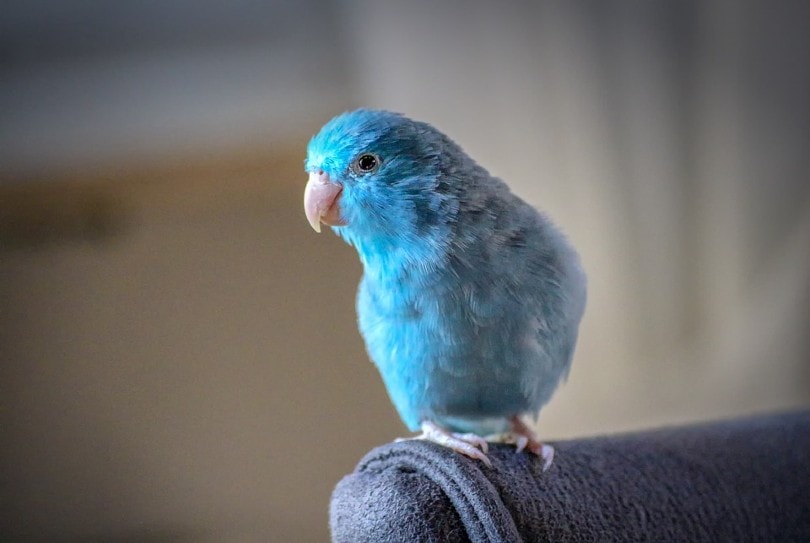
Parrotlets are known for being quieter than their other parrot relatives. The sounds that they do make are lower in volume than their screechy cousins. Ornithologists divide the types of sounds that birds make into categories.
Songs
Songs and calls can often be lumped into the same category, but they are two different types of sounds. Songs are generally longer and have a clear pattern. They are used to attract mates and mark territory, so songs are more commonly used by males.
Calls
Calls are generally much shorter and lack the complexity of songs. Both male and female birds make calls frequently. Depending on the situation, a call can signal alarm, flight, or many other purposes.
Non-Vocal Sounds
These can be any other sounds made by your bird. Flapping wings, pecking, chewing, and any other noise can be categorized as non-vocal.

The 9 Parrotlet Sound Meanings
You can decipher your parrotlet’s mood by listening closely to the sounds they make. Body language is also important, as some of these sounds are similar to the human ear. Here are some common sounds parrotlets make to help you better understand your bird’s mood.
Unhappy Sounds
1. Alarm Calls

Alarm calls indicate to other parrotlets that danger is near. If your parrotlet is the only bird around, it can still make alarm calls to show it is annoyed with something or afraid.
2. Beak-Clicking

Unlike tongue-clicking, beak-clicking indicates a bird feels threatened. Your parrotlet will click the top and bottom of its beak together in rapid succession. This will often be accompanied by a stretched neck, feather-ruffling, and dilated pupils.
Happy Sounds
3. Talking

Parrotlets are like all parrots in that they only talk when they are relaxed and content. The parrotlet’s speech isn’t as strong as a parrot’s, but they can imitate some speech and learn up to 15 words.
4. Singing

Parrotlets sing when they are happy. Their songs sound like this.
5. Chirping

Short, frequent chirps, like these, indicate excitement.
6. Whistling

Similar to chirps, whistles are short and repetitive. They also demonstrate that your parrotlet is happy or excited.
7. Tongue-Clicking

Unlike beak clicking, which indicates agitation, tongue-clicking noises show contentment and a desire for attention. The sound is similar to a human clicking their tongue on the roof of their mouth.
 Neutral Sounds
Neutral Sounds
8. Imitations

When your parrotlet is calm and relaxed, they may sing to themselves or make sounds that imitate noises around them, like music or other ambient noise.
9. Silence
Parrotlets are not as chatty as other parrot species. Sometimes they are silent which also indicates a relaxed state.

Final Thoughts
Understanding the reasons your parrotlet makes certain sounds can help you better care for your bird. It’s nice to know that your bird is happy and relaxed when they are singing and chirping. Paying attention to their alarm calls and beak clicks will also let you know when they are upset so you can better understand how to make them more comfortable.
Featured Image Credit: Chelsea Sampson, Shutterstock
